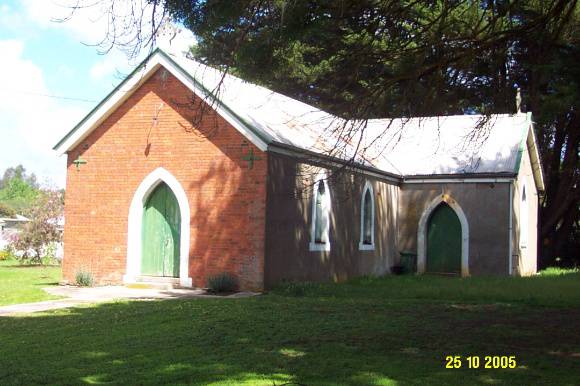| Back to search results » | Back to search page » |
|
St. JOHNS CATHOLIC CHURCH (FORMER)
Location11 CHURCH STREET, SANDFORD, GLENELG SHIRE LevelRecommended for Heritage Overlay |
|
Statement of Significance
What is significant?
St John's Catholic Church is located in an Church Street, close to the intersection of Burke Street and the Casterton-Portland Road. The church is in the Primitive Gothic Revival style. Its plan is T-shaped and it is built of red bricks, locally made. Two mature Cupressus macrocarpa (Monterey cypress) are located at the rear of the church, possibly dating from the late nineteenth century or early twentieth century. The original part of the church dates from 1866, although Catholicism was active in the township well before that time. Prior to the construction of St. John's, irregular services were conducted by itinerant priests from the Casterton parish at the Caledonian Union Hotel. The architect of St. John's is not known, but the building contractor was Jas. McCormack, a local builder. The later east-west transcept was constructed after the Catholic Church sold a portion of their land to the Victorian Railways. The Church retains a high degree of integrity externally.
How is it significant?
St. John's Catholic Church is of historical, social and architectural significance to Glenelg Shire.
Why is it significant?
St John's Catholic Church is of historical significance as a representation of the importance of Catholicism within the community, and its growing popularity in the Casterton and Sandford district early after settlement in the 1860s. The church is of social significance to the township of Sandford as the focus for the Catholics who settled in the township in the mid nineteenth century, mostly small selectors of pastoral land in the mid to late nineteenth century. It is of architectural significance for its use of the Gothic Revival style to express religious values.
Group
Religion
Category
Church




